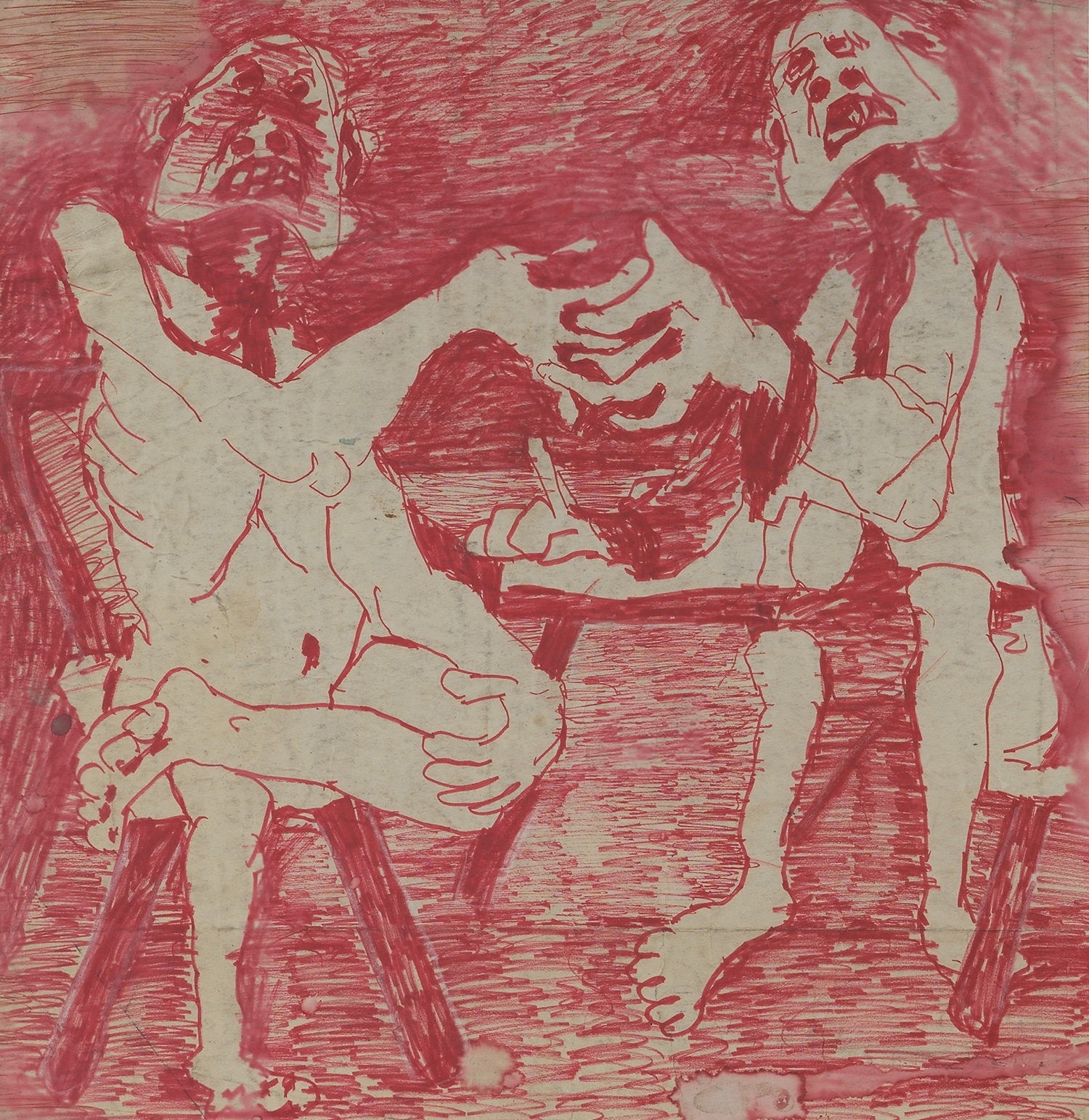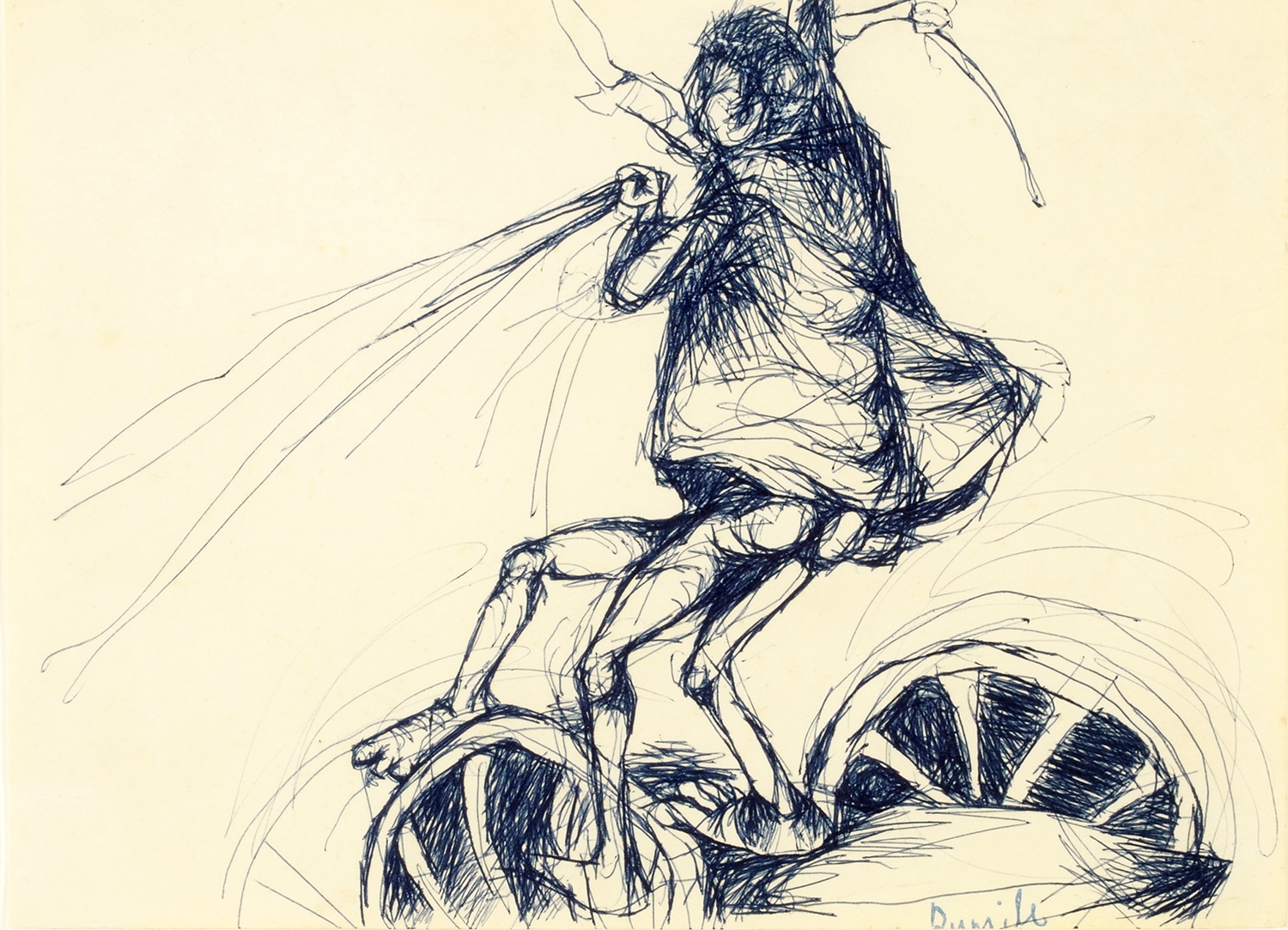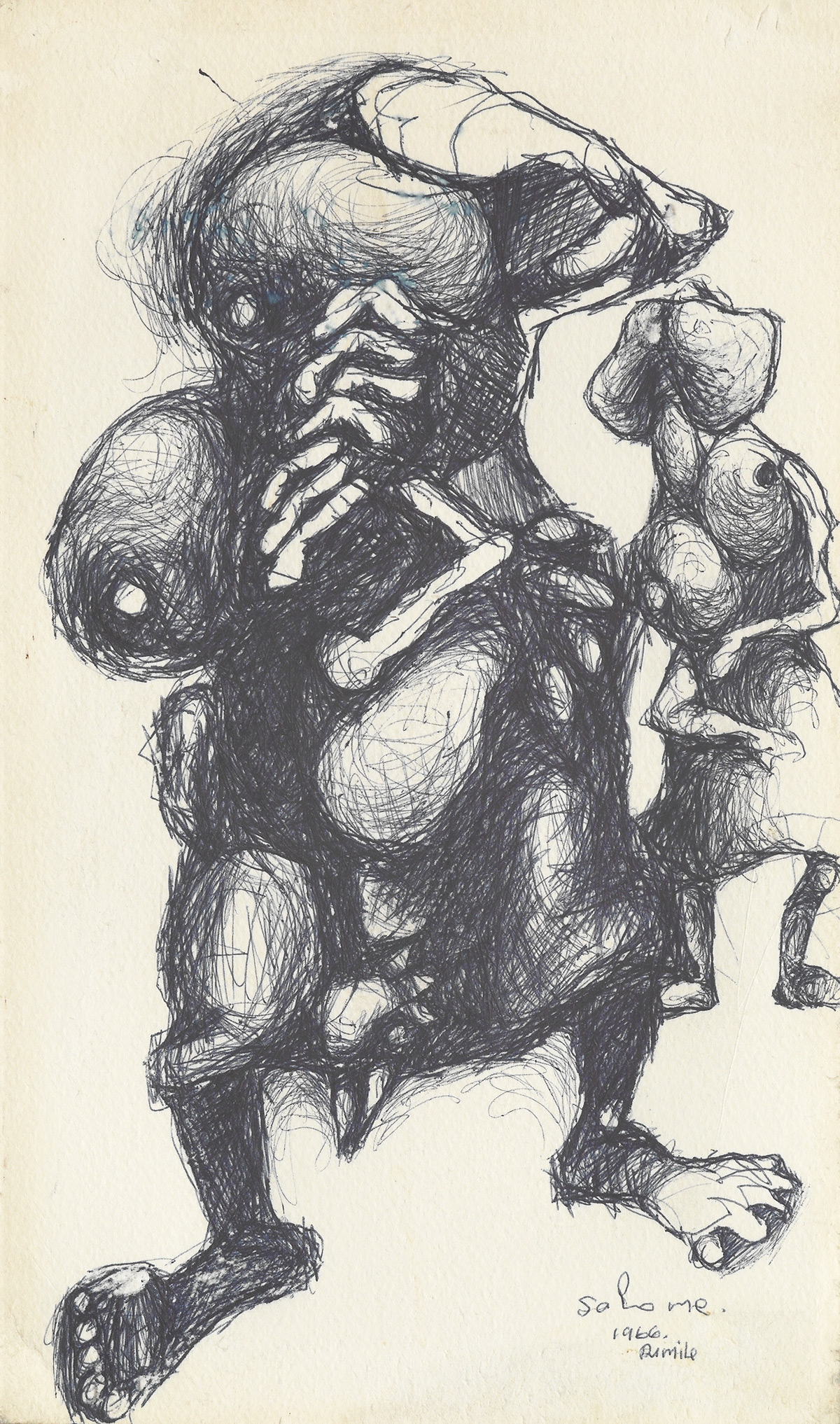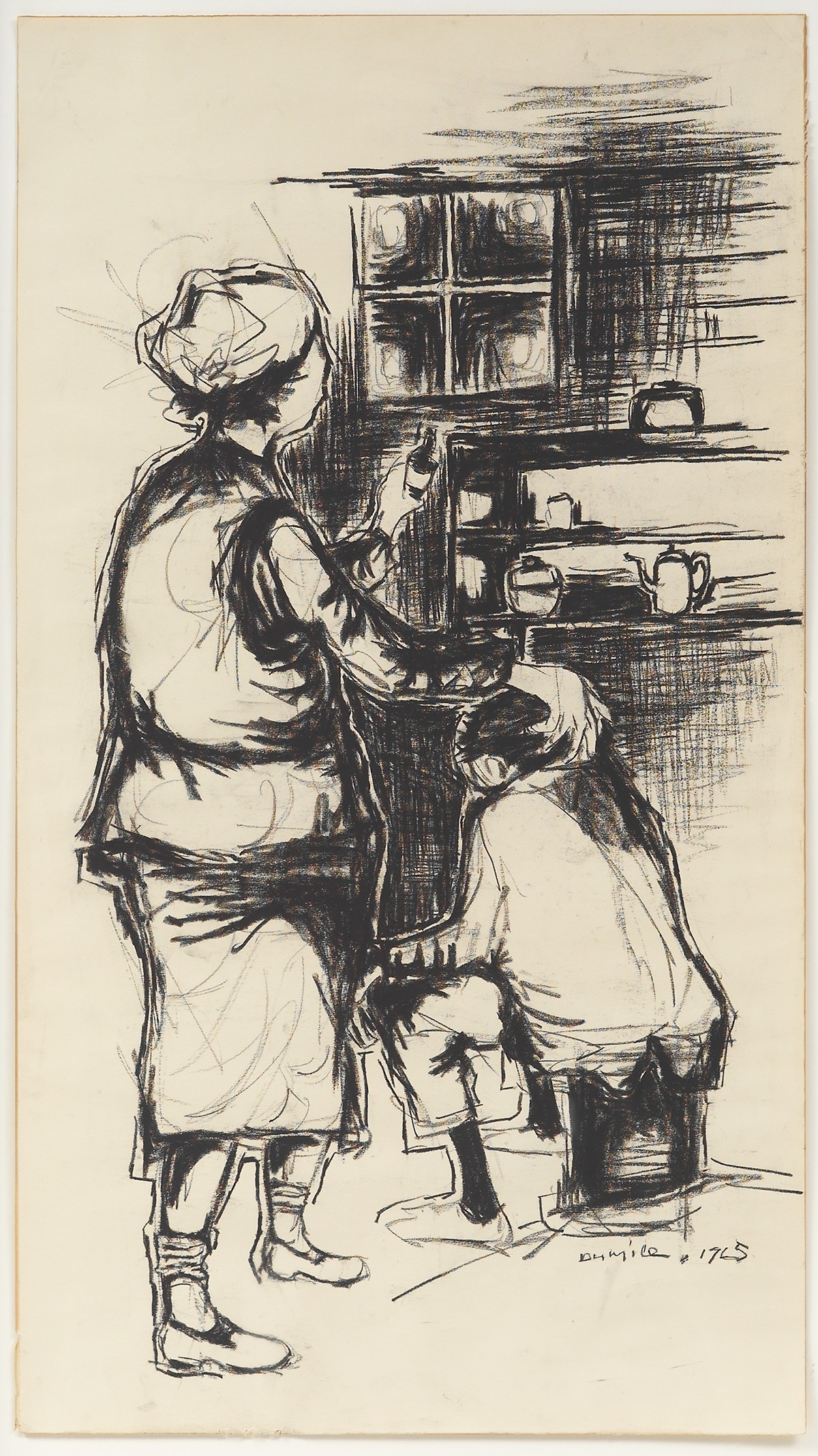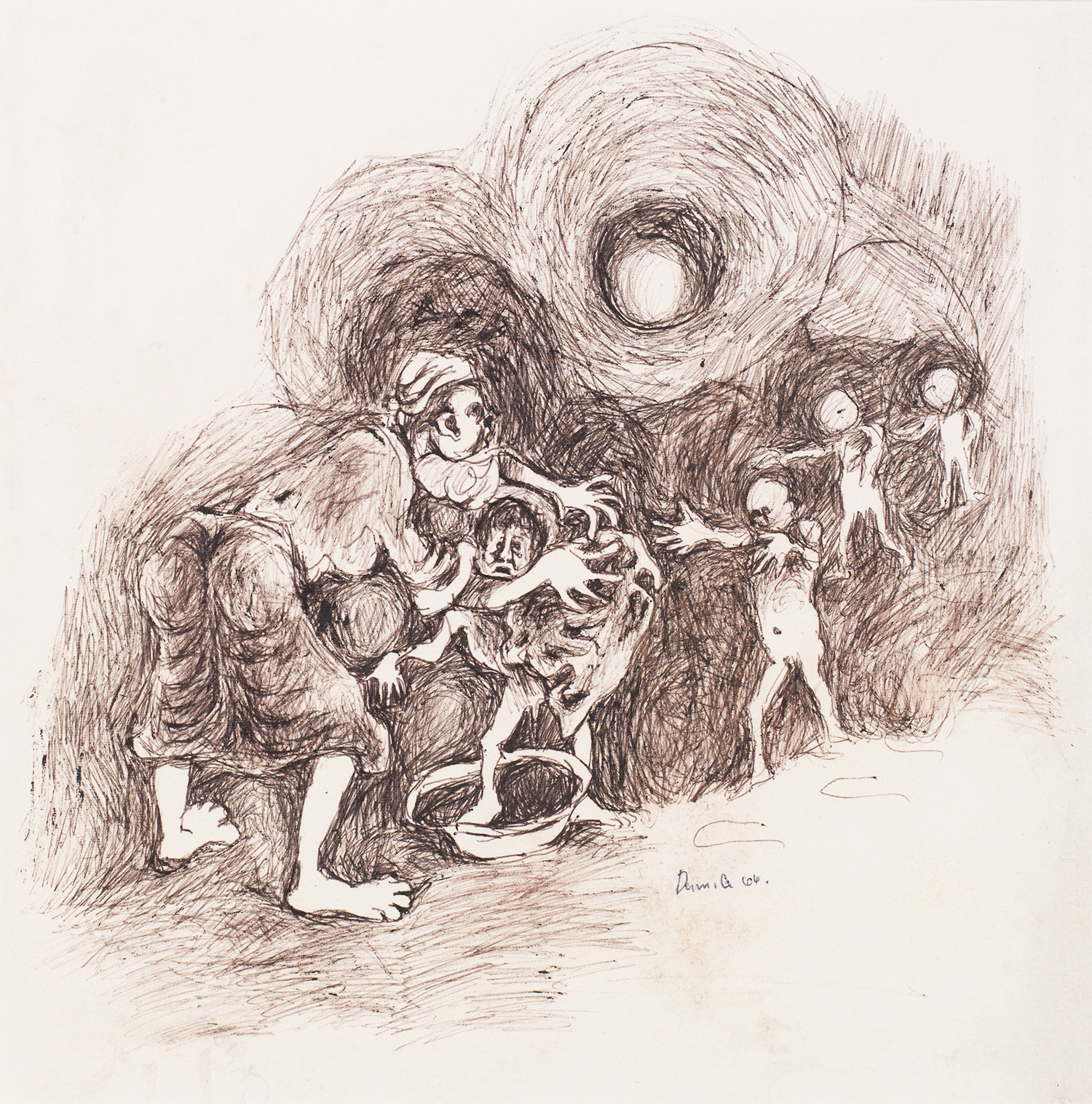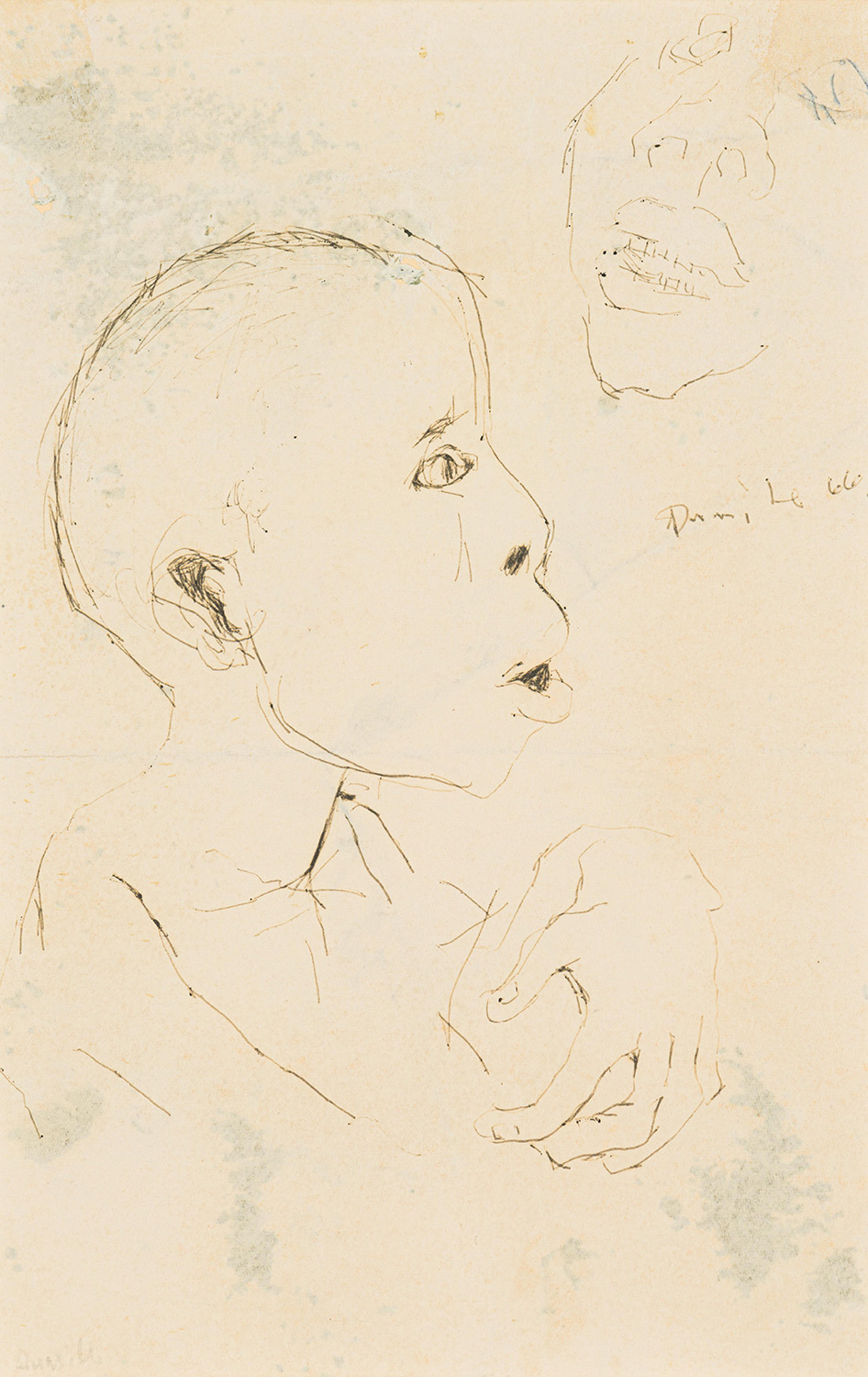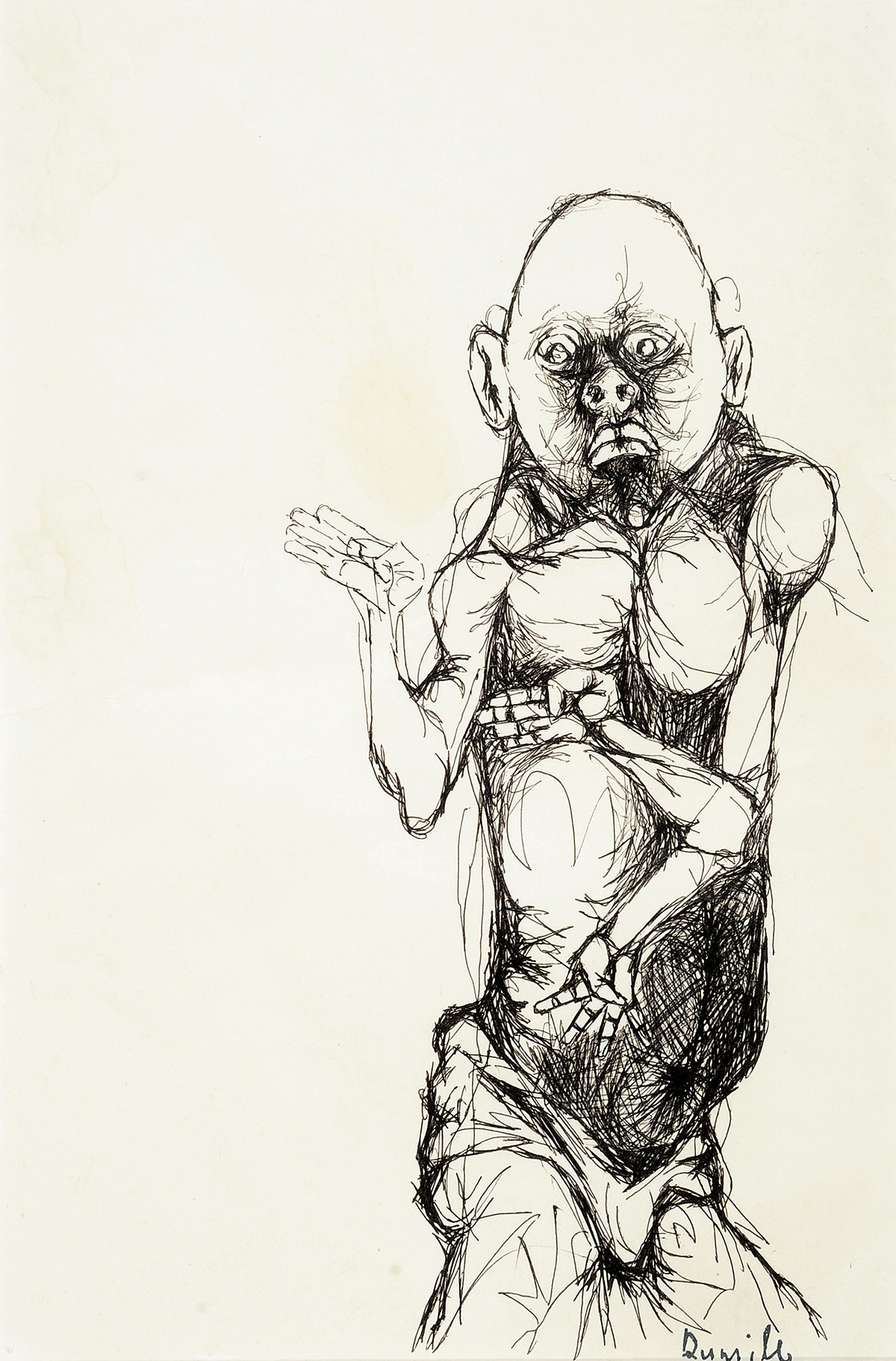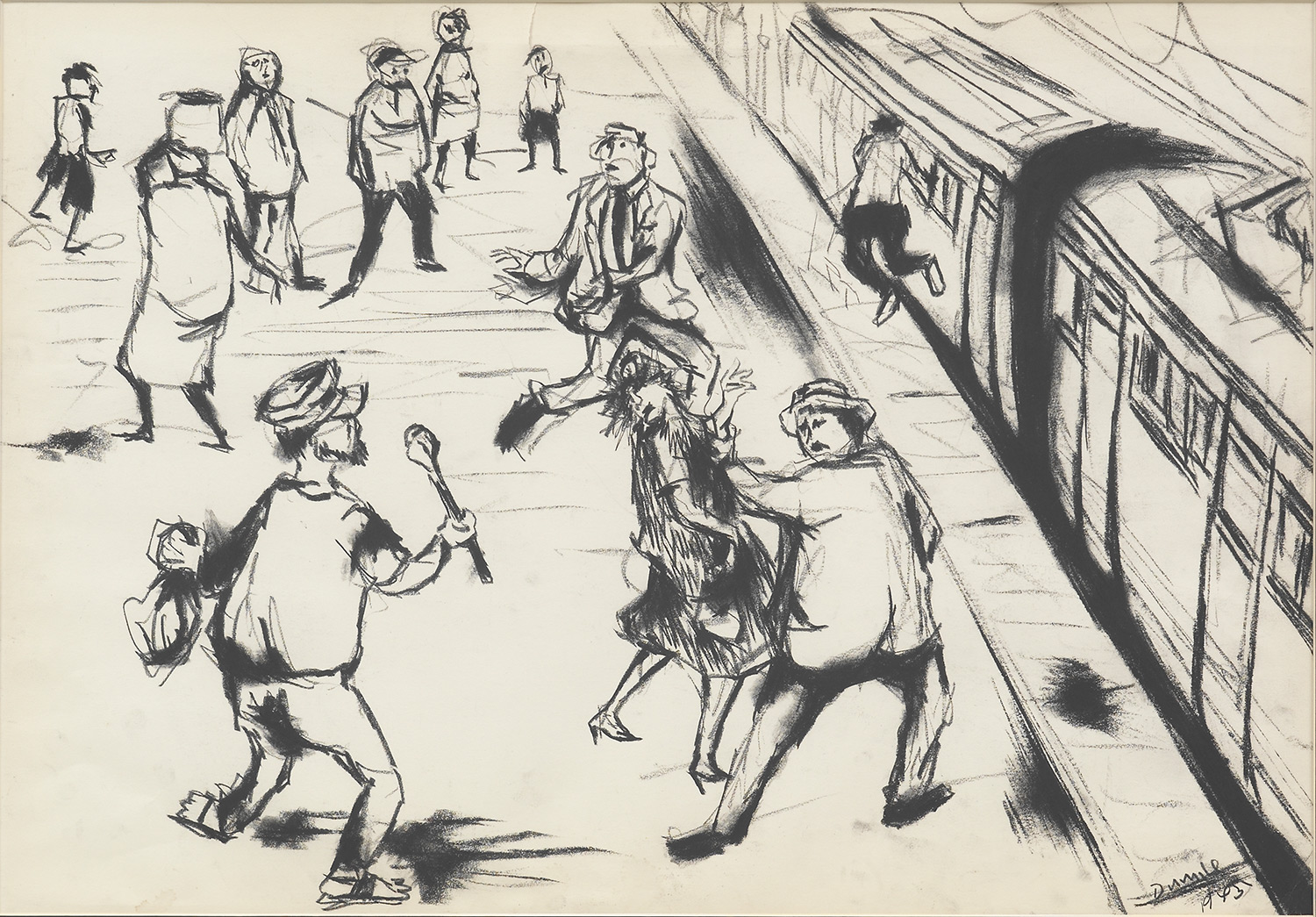DUMILE FENI (1942 – 1991)
A Couple Engaging
Date unknown
red koki pen on paper
34 x 33 cm
Boy in Cart
undated
ink drawing on paper
20 x 28 cm
Gum Boot Dance
1965
charcoal on paper
40 x 40 cm
Mother And Child
1966
pen on paper
74 x 51 cm
Salome
1966
pen on paper
32 x 18 cm
Untitled (2 Heads)
1966
pencil on paper
24 x 26 cm
Untitled (3 Hands)
late 1960’s
pen on paper
36.5 x 52.5 cm
Waiting for the Train
1965
charcoal on paper
36.5 x 52.5 cm
BIOGRAPHY
Dumile Zwelidumile Mxgazi Feni-Mhlaba was born in the small farmstead of Withuis in Worcester to parents Geelbooi Magoqwana, a trader and evangelist, and Bettie Nothemba Mgxaji, a business woman. His family had San/Bushman ancestry. When he was young, they relocated to the Welcome Estate in Cape Town.
Feni’s first name, Zwelidumile, means ‘a person known all over the country’ and his unflinchingly expressive drawings made an indelible mark on the landscape of South African art. His life almost exactly coincided with the apartheid era, and in his emotionally charged drawings, paintings and sculptures he portrayed South Africans’ lives under the oppressive apartheid regime, earning him the epithet ‘Goya of the townships’.
Within just two years of his first solo exhibition at Gallery 101 in Johannesburg, Dumile had three further solo exhibitions, represented South Africa with five works at the Sao Paulo Bienniale of 1967, participated in several group exhibitions and received a number of prizes.
In 1968, he moved to London, but he had a difficult time there, living for a long time in a near-empty basement flat in North London with very little income. His big passion was jazz music, and he spent what little he had in Ronnie Scott’s and various other jazz clubs in Soho. He counted among his friends many of the great South African jazz musicians of the time, and designed the cover art for a record produced by Hugh Masekela.
After a brief stint as a visiting lecturer at UCLA, Dumile moved to New York to attend film school at NYU in the early 1980s, where he found himself studying on the same course as Spike Lee.
After trying persistently to move to the United States, he found a way in 1978 and lived in self-imposed exile from 1968 to 1991 based between London, Los Angeles and New York. Although he continued to draw between odd jobs, including designing record labels for Jazz records, he spent more and more time sculpting.
While looking for jazz albums at Tower Records in New York in 1991, Dumile suffered a fatal heart attack.
In 2010, a documentary called Zwelidumile by South African filmmaker Ramadan Suleman was released.


